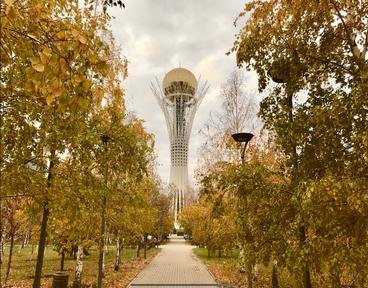Quiz Answer Key and Fun Facts
1. Kazakhstan's capital city was renamed in honour of the country's first president in 2019. What was his name?
2. In 1993 Kazakhstan became a founder member of which international cultural organisation along with Azerbaijan, Kyrgyzstan, Turkey, Turkmenistan and Uzbekistan?
3. What type of geographical feature characterises a large part of northern Kazakhstan also known as the Great Dala?
4. The Aralkum Desert in southern Kazakhstan (and northern Uzbekistan) didn't exist prior to 1960. What caused it to develop?
5. Located close to the Caspian Sea in western Kazakhstan, Karagiye has a name that means "Black Jaw" in Turkic. What geographical point of Kazakhstan can be found there?
6. With which of its five neighbours does Kazakhstan have the shortest land border?
7. Reaching up to a point over 1,000 metres above sea level, which of these is a prominent landmark visible from Kazakhstan's largest city?
8. What type of bird is featured on the flag of Kazakhstan?
9. If you visited the UNESCO World Heritage Site at Tanbaly (or Tamgaly) in southern Kazakhstan, what would you expect to see there?
10. Kazakhstan is well-known for being the biggest landlocked nation in the world, but approximately how much larger is it than second-placed Mongolia?
Source: Author
Fifiona81
This quiz was reviewed by FunTrivia editor
agony before going online.
Any errors found in FunTrivia content are routinely corrected through our feedback system.
